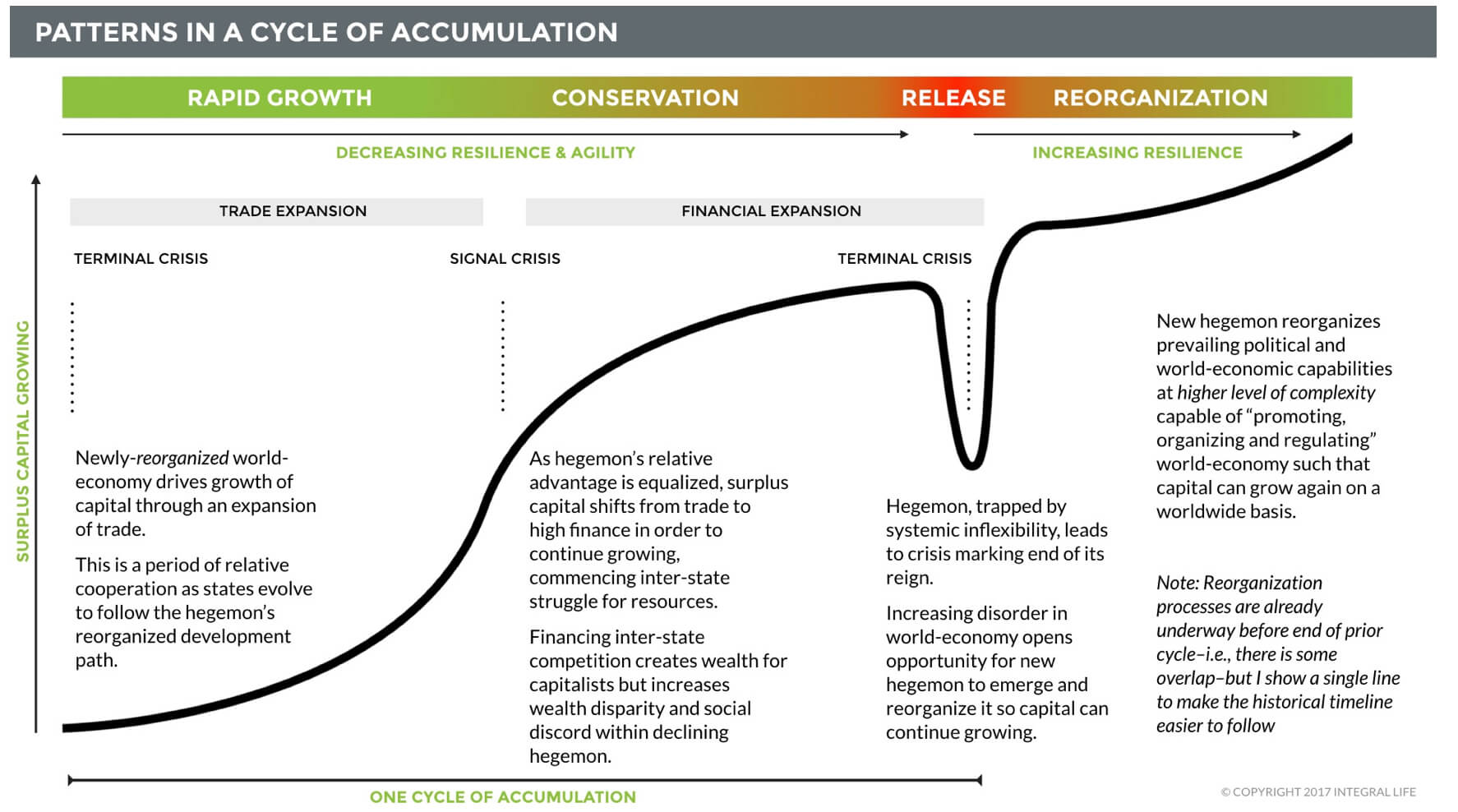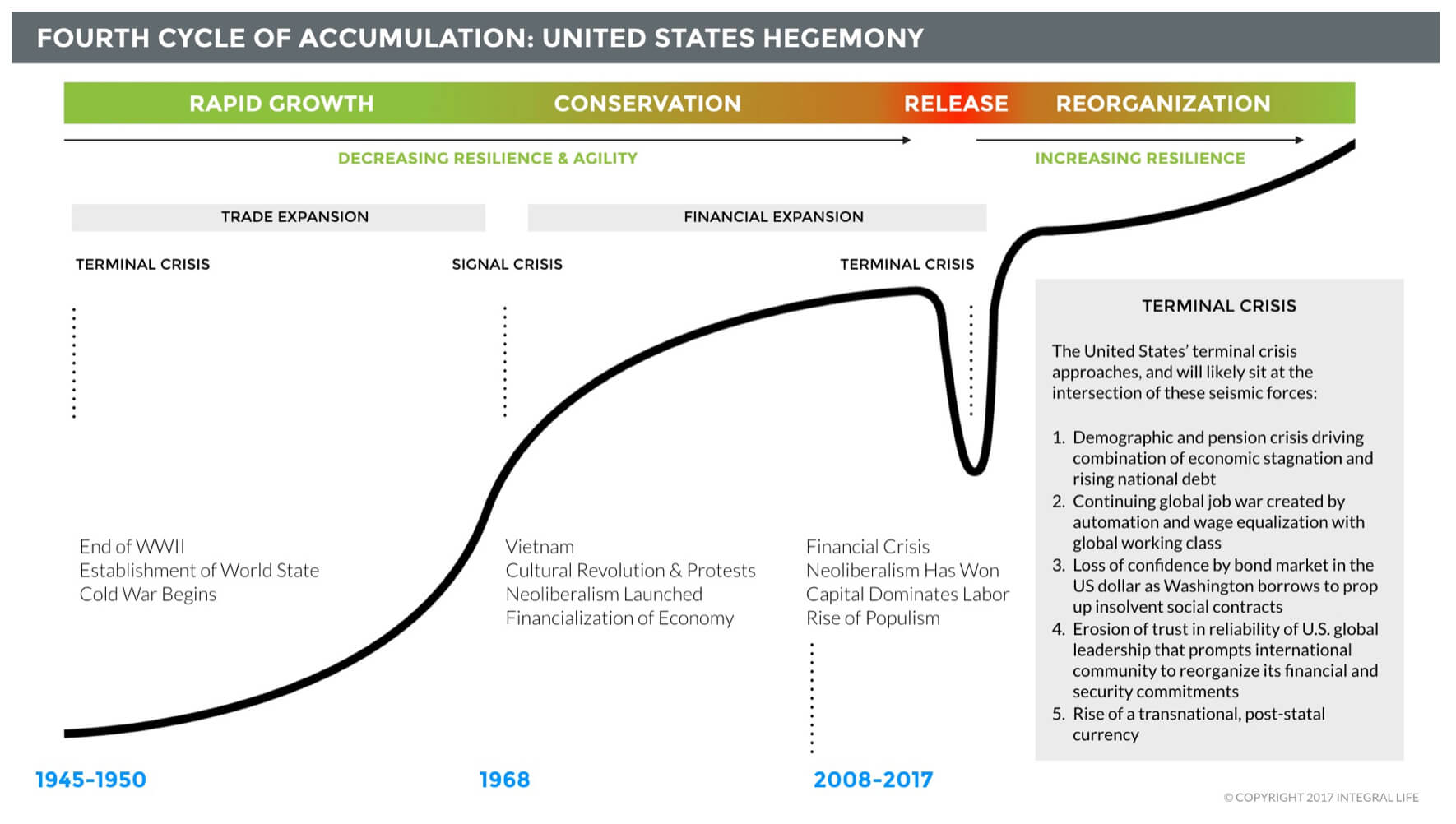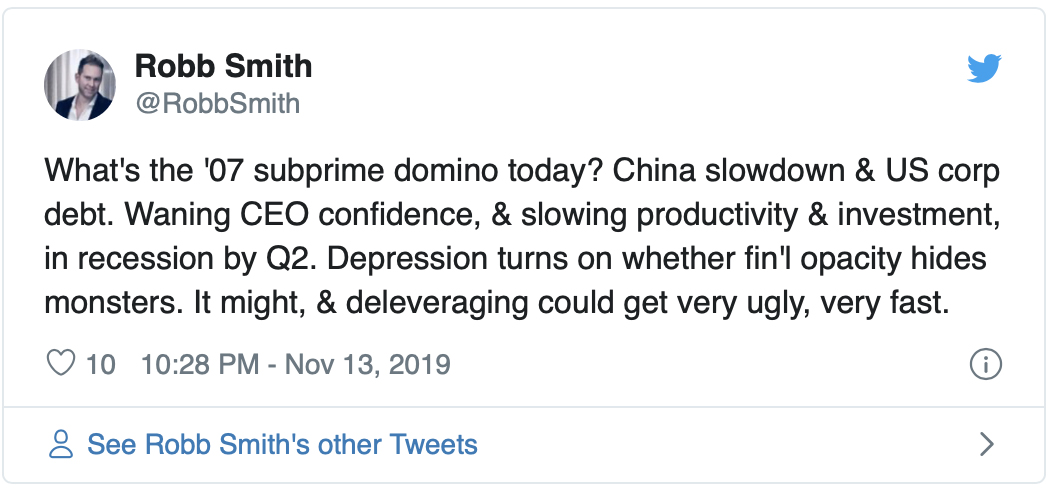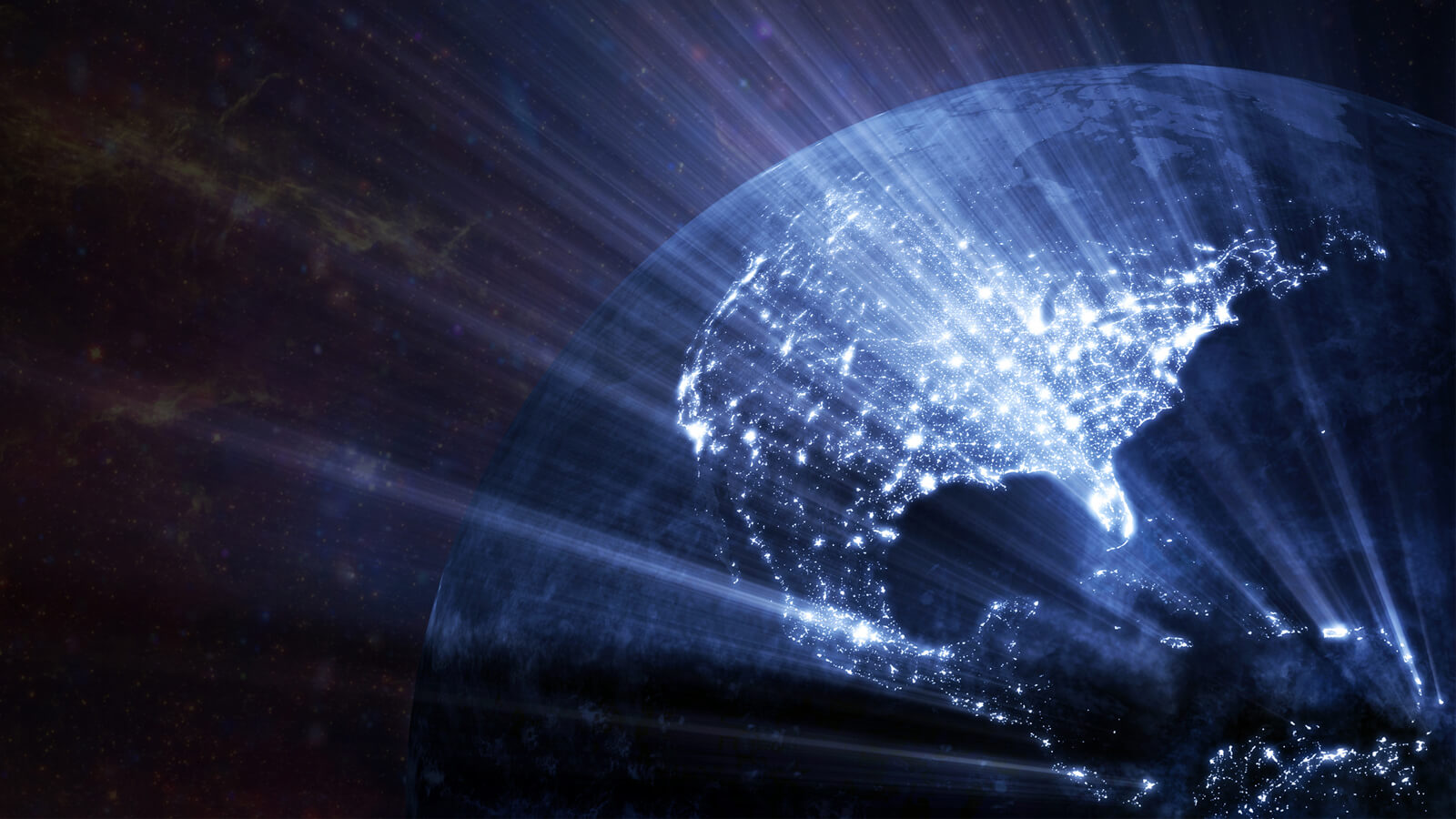he Transformation Age Series is a series of written articles and accompanying webcasts that Robb Smith will host for the Integral Life community in real-time as the Great Release (TGR) unfolds, giving rise to the Transformation Age.
The above episode is available for free. We also invite you to become a supporting member of Integral Life as we continue exploring and unpacking the critical tensions, conflicts, and opportunities of our time.
Click here to check out all the visuals used in this presentation.
Deeper Into the Great Release
written by Robb Smith
Ladies and gentlemen, the Great Release is truly and fully underway.
Over three years ago I wrote The Great Release, a long essay that predicted and described an imminent global, catastrophic breakdown in the “world state” as we know it. Here is how I described it:
[There] is much evidence to suggest we may be living through the end of the fourth major economic empire of the past 800 years, a cycle which since 1945 has seen the United States build history’s first world state. I believe that this cycle may be ending for the same reason that all complex systems breakdown: the prevailing post-World War II world state has become internally stagnant and its resources and power structures are, in the language of complexity science, “overconnected.” In short, the system can no longer adapt to the changes around it, and we can see how the United States decline since 1970 mirrors each of the three prior evolutions of capitalism.
Even more astounding, when we situate the past decade against the western experience since 1945, we see that the post-World War II world state continues to seek–and indeed has been seeking since 2008–an important, overriding outcome: it has been trying to establish greater resilience and break up monopolies of resources (and thought), and the lack of innovation they engender, which characterize all known complex systems when they become stagnant.
When we map resilience across the four quadrants of integral metatheory–mental health disorders, population health outcomes, consumer debt levels, new business creation, wealth disparity, real income stagnation, government regulation, housing prices, political polarization, fragmentation of shared cultural values (i.e., anomie) and other areas–there is ample evidence to suggest that our national condition is irresilient. The result is a nation (and indeed world state) that seems to be increasingly-insistent on a phase shift that complexity theorists call a system release, a phase that will lead to a reorganization of the prevailing world order that liberates innovation and increases its capacity to absorb future shocks and change. These release and reorganization phases have marked the end of all prior cycles of economic hegemony. If accurate, the result will be nothing less than the emergence of a fifth phase of capitalism or, perhaps, the emergence of a post-capitalist organizing principle (which could be envisioned, possibly, through the confluence of truly sustainable energy sources, massive automation, and the exhaustion of capital to find new markets for growth).
In short, although it’s hard to see through the dust kicked up by fierce partisanship, the factional lobbying of narrow interests, and the din of a 24/7 global news cycle, when we take a step back we might be able to see a genuinely big picture–that of an entire world state that is desperately trying to free up trapped “capital” in all four quadrants–creative and spiritual resources; health and educational resources; relational and cultural resources; and economic and political resources–all of which have become stuck, stultified and trapped by monopolistic forces throughout our lives…
…All of this occurs against a real-world backdrop where we suffer from increasing discord and systemic problems grow deeper. It’s not unlikely we approach a Terminal Crisis and have seen tremors warning us of the coming earthquake that might shake our current structures to the ground.
That earthquake has now begun. Nanoscopically small and quietly transmissible, Covid-19 would be almost laughable as a catalyst for the great release if it weren’t so deadly. But as it stands, it is in fact the perfect spark to alight the ample tinder of total system irresilience I describe in TGR: it is transnational, slipping easily past geographic borders. It capitalizes on ignorance and epistemological childishness, thrashing leaders and societies that can’t form a coherent and cohesive policy response. It is disruptive to social space, precisely what a modern economy can’t handle with its service-heavy economies and extended international supply chains. As I’ve said elsewhere, this global pandemic is a health plague for the elderly, but an economic and social plague for everyone.
I want to use this series of articles and webcasts to help you notice and explore in real-time what is happening inside of these structures as they happen. Doing so will help you navigate and process the ongoing trauma of the great release in very concrete ways: by staying informed of what’s really happening at the level of the deeper structures, and by seeing the bigger and deeper picture, you will regain power, clarity and capacity to navigate it and lead your family and organizations through it.
If you haven’t read The Great Release, I suggest you do so (I can only hit the high points with these shorter articles). One of the images I use frequently to tell this story is that of the Adaptive Cycle, which I’ve modified to show as a timeline. Here is the generic version of a hegemon’s growth cycle:

And here is the version specific to the United States’s cycle:

What you need to understand is that we are now quite definitively going deeper into the period above in red, the “Release” phase. Writing at the end of 2016, I wasn’t totally sure how deep we had gone yet. The Global Recession of 2008 was also an earthquake, but I knew it wasn’t the Terminal Crisis I refer to above: the reforms of 2009-2012, for example, simply didn’t heal enough of the problems inherent in the system to qualify as an adequate Reorganization phase. In TGR, I describe how since then we had gone right back to trend of growing irresilience:
The Great Recession and its aftermath were tremors that rocked the world and signaled that the world state is approaching a systemic release. Remember that a release phase starts when the potential for change is highest and overall system resilience is lowest. I don’t believe that the Great Recession of 2008 represented the actual, acute release of the entire American cycle–it hasn’t forced enough of a reorganization to yet qualify–but any economist will tell you that our economic resilience in 2008 was the lowest in a generation or more: the west had way too much debt, asset values (particularly in housing) were an absolute bubble, and Wall Street had constructed a global house of cards using CDOs (collateralized debt obligations) and other complex derivatives. A “black swan” is supposed to be an outlying event you don’t see coming; in retrospect, 2008 was the most predictable black swan of our lifetimes. We had almost no system resilience because all of the resources were financed with debt and stacked like a house of cards.
As we know, it all came crumbling down, just as it should have. Asset values were wiped out, debts came up default and banks were caught with their pants down. But if this movie played out the way the complex system was signaling it needed to, we would have seen a massive amount of creative destruction: major bank failures; capital liberated back into new entrepreneurial hands; power reallocated amongst a diverse set of participants; a rebalancing of the profit distribution between capital and labor; a reinstitution of Glass-Steagall (the repeal of which was stupid, a major resilience-decreasing deregulation, which shows that not all regulation promotes irresilience; many regulations are designed to keep system diversity high), etc.
Instead, the release, such as it was, was artificially aborted. Between President Obama’s agreement to support the global commercial banks in 2009 (along with other global political leaders) and the concerted policy actions by the Fed, the Bank of Japan, the Bank of England and the European Central Bank (take note: these are all the post-World War II world state clients), global leaders moved too rapidly back through a mini-cycle that 1) reorganized global resources, 2) used them to fuel another mini rapid growth cycle (that benefited mainly the asset-owning globalists) and 3) put us right back into the conservation stagnation where we were before (and we remain today). All that effort and money, and the only difference is we now have even more national debt than before (and asset bubbles everywhere). Voters remain angry with existing power monopolies, and the system remains dissatisfied with its level of resilience.
That was my belief then, and notice it remains even worse today: in all four quadrants, we have a set of deep structures that are seeking to cure massive power imbalances, disequilibria and tensions. The spring has been wound tighter and tighter for decades and wants to release, but at every occasion policy makers step in and double, and now triple down on a playbook to not allow the system to heal itself. They simply are not equipped with the consciousness or capabilities to navigate the burgeoning metacrisis as it demands, and so we head deeper into a bigger, more catastrophic release with every passing year. And this chapter, as we head deeper into the release phase with a worldwide economic depression ahead, will be the biggest opportunity yet for the system to reorganize. Whether it does or not depends almost entirely on the nexus between the United States’s economic hegemony in the form of its status as world reserve currency, and the rapidly-changing political consensus inside the United States as it relates to its internal political-economic philosophy. I have views on how both are undergoing massive and history-changing volatility as we speak, and these are the items we must watch very closely.
If I had to say it plainly: if the United States doesn’t reorganize itself in order to also reorganize the World State as we know it today, the world will soon have no choice but to force a reorganization upon us and everyone.
Let me end with a final quote from TGR, in which I remind us that we’re engaging in long history here, when cycles last a century or more and major shifts take decades:
The acute release phase of the United States’s hegemony probably has not occurred yet, but when it does a Terminal Crisis will be upon us. It’s important to recall that the inadequate reorganization that occurred after World War I accounted for the recurrence of more creative destruction a mere twenty years later in World War II. From the first shot of WWI to the last shot of WWII was about 30 years, and during that time the geopolitical landscape morphed from a highly-nationalistic order to the international order we’ve enjoyed during our lifetimes. That pendulum is now swinging back the other way. And although the process of creative destruction is usually very fast relative to the other phases of the system, what we can’t know is precisely where we are in our own cycle; it’s quite possible we’ll look back and see the 2008 Great Recession as the start of a 30 year process marking the rise of the next global hegemon. Regardless of how it’s measured, it is a time of incredible division, disruption and opportunity for the agile.
I’m wrong about plenty of things, but I think that view might prove prescient. You might already sense, as I do, that the Great Recession of 2008 was somewhat akin to World War I, which marked the start of the last thirty-year release phase. Like World War I, the Great Recession of 2008 was a shocking, world-changing event that warned everyone that the old world order was gone, and something new was underway. It shook up power, transformed values, gave serious warning, and left a terrible mark in the world’s psyche (and quite clearly in the west). But similar to how WWI was resolved—that is, poorly, with wholly inadequate accommodation being made to prevent more system tension and the next world war—we’ve also had poor resolution to the forces that caused the Great Recession to begin with. Indeed, for the past 11 years we’ve been in a period akin to the Roaring Twenties, with our sky-high valuations on everything from unicorn startups to housing to stocks to Chinese high-rises. The Champagne is ample, flowing, and tastes great.
So here we are, at the end of a Roaring Twenties-like decade, the longest economic expansion in US history, and what can possibly go wrong?
Lots, actually, as I warned all of my followers last year to prepare for a crisis that would hit in Q2 of 2020:

In any case, let’s stay with the adaptive cycle timeline we’re imagining. Here we are at the end of a roaring decade of fake economic progress built on debt (that, too, mimics the Roaring Twenties, by the way), and after a possible thirty-year phase shift has begun. Now, along comes a tiny little virus, catalyzing what I believe will be a global depression and ending our own roaring decade, just as the Great Depression of 1929 ended its own decade (1929, incidentally, was the terminal crisis for British hegemony, that moment when their cycle of dominance was basically over as the US dollar became the reserve currency, a structural feature later cemented by the victory of World War II 15 years later and its post-war World State reorganization). If the analogy holds, and I think it will to a larger degree than most people currently expect, then we now enter yet another period of years of economic disruption (on top of the immediate health and social disruption of, at the very least, the next 12 months).
Stepping back even further, my broader point is this: don’t expect this to be over in a month or a year. We’re dealing in long cycles of adjustment, perhaps as long as 2008-2038. It is true, as has been popular to share on social media recently, what Lenin says: “There are decades where nothing happens; and there are weeks where decades happen.” We are in such a time now. But we have probably a decade or more of more shocks and adjustments ahead. Indeed, if I was asked to predict, I think we have maybe another ten years (and perhaps as much as twenty) of massive social and economic ups and downs before we get to the final, culminating disruption—the Terminal Crisis—that will bring in the real and serious reorganization upon which the Transformation Age will finally take hold and grow. I think that event, which is really a multi-year process of events, will sit at the nexus of climate disruption, widespread global economic failure on the back of the US dollar, and geo-strategic competition (based specifically on increasing capacity equalization amongst global powers on technology fronts including advanced weaponry, bioweapons, AI/quantum computing, cyberwarfare and others, which might lead to war, and who in any case are in some version of low-grade war already). And when it comes, when the final process of events that disrupt the current system so thoroughly that we end up in a truly new regime of global social, economic and environmental governance, we’ll see what it was up to all along:
The good news, in some respects, is we know what a release does: it shatters connections and frees up innovation. We know how it operates: it destabilizes existing power structures. We know what it seeks: to return to higher resilience and better-functioning hierarchies. And we know some version of what comes next: chaos, innovation, experimentation and reorganization to an emergent, higher form of better-adapted organization (assuming there’s not an intermediate breakdown to a regressive, lower form of organization). We may not know the exact form or details these things will take as it proceeds, but we do know the underlying mechanics that are at work: break up control of resources; increase freedom and experimentation; and increase system agility.
We’re going to do everything we can to help you navigate this period so you don’t just survive it, but you actually thrive (you become anti-fragile in the face of breakdown). Because if any of what I write above is true, the reorganization is going to rely on you to make it happen. You are simply that important, and it’s my job and my team’s job to make sure you have every resource we can give you to help you do so. I’ll see you on the coming webcasts, if you can make it (and if you can’t, we’ll record them and send them out to our members).
About Robb Smith
Robb Smith is a leading thinker on the Transformation Age and the global Integral movement. He is the creator of the augmented leadership platform Context, co-founder and CEO of Integral Life and founder of the Institute of Applied Metatheory.
About Corey deVos
Corey W. deVos is editor and producer of Integral Life. He has worked for Integral Institute/Integal Life since Spring of 2003, and has been a student of integral theory and practice since 1996. Corey is also a professional woodworker, and many of his artworks can be found in his VisionLogix art gallery.

